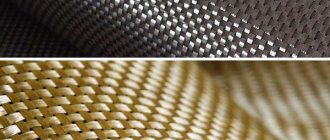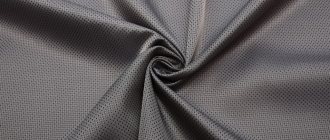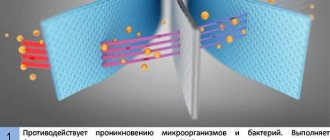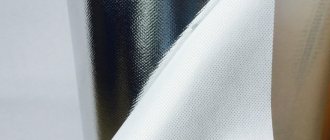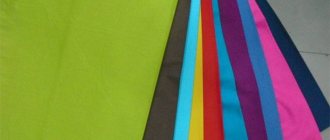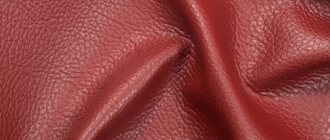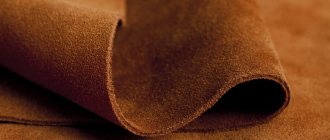History and modernity
This name includes a whole group of subspecies of matter created by mixing organic and artificial fibers. Therefore, it is difficult to determine the exact date when synthetics began to be produced. In the thirties of the last century, nylon was invented for car tires. Due to its exceptional characteristics (strength, ductility), it began to be used in the creation of clothing and footwear.
Only in the 60s, the production of polyamide as an independent type of new fabric was established experimentally. For a very long time people did not accept it, as they were accustomed to dressing from natural material. But soon it took a leading position and was included as a mandatory component for the creation of light industrial products. Today we meet products at every step (parts of household appliances, computers, dishes, building materials, elements in railway cars, airplanes and ships).
Features of composition and production
This type is obtained from organic natural resources, such as oil, gas, charcoal. Manufacturing occurs in three ways:
- • From benzene, caprolactam appears during the synthesis process.
- • From the resulting substance a fossil polymer is formed.
- • The last stage is direct technological processing, where a thread is obtained from stretched fibers.
Processing methods:
- • Using a special machine (extruder), where a hole is technologically provided, products made from polymer compounds are produced. The process involves extruding heated material.
- • Form polymerization, which produces a high-molecular-weight substance by repeatedly attaching small molecules to a major center.
- • Pressing refers to the process of producing fabric under pressure. A substance is placed into the hole of the matrix and then pushed out using a press stamp.
- • The molten plastic is pressurized into a special mold, which is subsequently cooled.
- • Vacuum forming produces sheet or film material. In this case, the temperature is heated until the product changes from a solid state to an elastic one.
- • Product design using the pneumatic forming method, under the influence of compressed air at high temperature.
In any of these stages, various chemical acid or chloride additives are used to achieve good results in fire resistance and water resistance.
How is production carried out?
Conveyor production of individual parts from polyamide includes several stages. Our company’s in-house specialists adhere to the following work technology:
- project preparation;
- coordination of the project with the customer;
- development of a three-dimensional image of a part;
- production of molds;
- making a sample of a polyamide product;
- start of mass production.
During the manufacturing process, our employees carry out competent calculations and prepare equipment, which allows us to ensure the highest possible quality of the future product.
Alexei
Leading specialist +7
Manufacturing cost calculator
Price
You can also send us a letter with a sketch drawing to receive an exact price and time frame
pros
Positive features include:
- • Flexibility. Under heavy loads and stretching, the shape cannot be deformed.
- •Products dry faster than those made from organic fabrics due to their water-repellent properties.
- • During a fire it is not flammable and does not flare up. It just melts and smolders.
- • Not afraid of ultraviolet radiation, under the influence of which it does not fade or lose its original color.
- • Resistant to mold and mildew.
- • Can be used in aggressive conditions, as it is not susceptible to corrosion by salts, acids and alkalis.
- • The material is not itchy and pleasant to the human body.
- • Technologists at enterprises can easily paint it in any color scheme.
- • When washed by hand and machine, it remains in its original shape (does not shrink, does not wrinkle).
- • Highly durable, as it consists of threads, one of which can withstand a colossal load of 1.5 kg.
- • Low specific gravity gives the product “weightlessness”.
Differences between polyamide and polyester
Today, synthetic substances are actively used in creating materials and sewing textiles. Each of them plays its role in improving different types of fabrics.
It's hard to say which is better. The main difference between polyamide and polyester is that they are obtained from different polymers. The characteristics of these materials are similar with minor differences that can be easily observed using the following table.
| Properties | Polyester | Polyamide |
| Appearance | Smooth | Initially rough, but can be smooth |
| Physical Features | Does not allow air to pass through, does not wrinkle, is heavier, more flexible, not susceptible to biological influences (mold, germs, moths, etc.) | Allows air to pass through, practically does not wrinkle, is lighter, more elastic, not susceptible to biological influences (mold, germs, moths, etc.) |
| Elasticity degree | Less elastic | More elastic |
| Water repellent properties | Slightly higher hygroscopicity | Low hygroscopicity |
| Pollution resistance | Lower | Higher, except for greasy contaminants |
| Susceptibility to staining | Poor paintability | Can be dyed well in any shade |
| Susceptibility to direct sunlight | May lose color when exposed to sunlight | Doesn't fade or fade |
| Strength level | Less durable | More durable |
| Degree of difficulty in care | Washable at 40 degrees | Can be washed at low temperatures, but greasy stains are difficult to remove |
| Possibility of dry cleaning | Can | It is forbidden |
| Use in textile industry | Used frequently | In its pure form it is practically not used |
| Use in other industries | They mainly produce textiles: fabrics, insulation, curtains, bags, tents, etc. | Used for the production of car tires, conveyor belts, fishing lines, fishing tackle, ropes, workwear for working in extreme conditions, etc. |
| Environmental properties | Does not decompose, but can be recycled | Does not decompose, cannot be recycled |
| Price | Lower | Higher |
Modern manufacturers have long realized that to create high-quality material, it is better to mix artificial fibers. Through various manipulations, people have learned to give synthetic fabrics any properties and appearance.
Adding polyester to the fabric gives it lightness, durability, and protects it from deformation. Polyester fibers are also used for the manufacture of protective and decorative coatings (stretch ceilings, corrugated sheets, metal tiles, etc.).
There are several varieties of polyamide fabrics:
- nylon – light, elastic, used to create tights, knitwear and sweaters;
- taslan - durable, breathable fabric, used for sewing outerwear;
- velsoft - soft, fleecy fabric, well suited for warm children's clothing and household products (towels, blankets, etc.);
- Jordan - a pleasant fabric with a water-repellent and breathable effect;
- elastane - can stretch 6-8 times, easily returns to its previous state, maintaining its original appearance.
Important
Polyamide is the general name for a group of synthetic materials, the first of which was nylon, which is also one of the most common types.
Polyamide fibers are slightly thicker than human hair, and can withstand a weight of up to one and a half kilograms. This makes it possible to produce a thin, lightweight, breathable fabric that is ideal for outerwear.
Disadvantages of polyamide fabric
The disadvantages include:
- • Low moisture absorption.
- • Due to the fact that the fiber has high thermal conductivity, clothes made from it will be cold in winter and hot in summer.
- • There is no way to remove grease stains.
- • Unsuitable for use at temperatures above 40 degrees. At this moment, breaking and crumbling occurs.
- • Low hygroscopicity leads to increased electrification.
- • Synthetics can cause allergic skin rashes.
Polyamide: material description
This fabric contains synthetic fibers. They are obtained by processing oil, natural coal and gas (organic raw materials). Polyamide usually has a rough surface, but nowadays smooth and shiny fabrics are produced.
The cost of polyamide depends on the type of synthetic fibers, application and characteristics.
The manufacturing technology of matter is divided into three stages:
- polymer synthesis;
- molding of raw materials;
- textile processing.
Advantages of polyamide:
- The main advantage is the high strength of the material. A polyamide thread is only twice as thick as a human hair, but this thread can withstand a load of 1.5 kilograms.
- High-quality fabric does not fray and withstands bends well.
- Polyamide fabric is easy to dye, so you can get any color scheme.
- Good elasticity, clothes made from this material are pleasant to the touch and look impressive on a person.
- Very light because the specific gravity of the fibers is low.
- Polyamide fabric does not allow moisture to pass through easily and dries quickly, three times faster than cotton clothing (well suited for outerwear).
- The fabric looks very beautiful, will never fade or lose its shape, reflects light well and does not wrinkle.
- Good air permeability.
- Polyamide is 100% resistant to thermal oxidizers.
- This fabric does not succumb to fungus and therefore does not rot.
- High level of fire safety: this material does not burn, but melts at high temperatures.
- This fabric is easy to care for, easy to wash and does not shrink.
Flaws:
- Increased electrification. The reason is low hygroscopicity, since polyamide contains little moisture, there is nothing to extinguish the static electricity that forms there.
- Great thermal conductivity. The fabric does not retain heat at all, but this can be an advantage in hot weather.
- Susceptibility to greasy stains: the resulting greasy stains are quickly absorbed deep into the fabric and are then difficult to remove.
- Low heat resistance; if polyamide is exposed to temperatures above 40 degrees, it hardens and breaks.
Velsoft blanket
Technical qualities and areas of application
Characteristics such as wear resistance and strength have allowed the structural material to be used in all sectors of the national economy:
- • In light industry it is used for the production of: summer clothes, raincoats and jackets, synthetic ropes and ropes, sports equipment, sneakers, sneakers and soles for other shoes; carpets and rugs, fishing gear, equipment for tourists, umbrellas, furs, tights and underwear.
- • In mechanical engineering, rollers, bushings, wheel rims and shock-absorbing mechanisms are made from polyamide plastic.
- • In the construction industry, it is used for the manufacture of: pipeline parts, shut-off and control valves, some types of solvents and paint and varnish products, antiseptic coatings and against metal corrosion.
- • The food industry uses synthetic elements for equipment that come into contact with products.
- • In medicine – these are suture surgical thread, artificial prostheses and joints, orthopedic corsets, support bandages and bandages, blood vessels.
Manufacturing of polyamide products according to customer drawings
It is not difficult to set up the production of polyamide products using customer drawings. Sketches must be prepared taking into account current standards. Parts are manufactured on milling, turning-milling, turning-turret, milling-engraving machines.
Owners of companies whose business is concentrated in the Russian capital have the opportunity to order the production of polyamide products according to drawings and prices from a manufacturer in Moscow, receiving a discount if they purchase a wholesale batch of goods. Industrially manufactured plastic parts comply with European standards, as well as all the requirements contained in GOST.
Varieties and modifications
Polyamide and nylon are the same fiber and have been used widely and successfully throughout the world for over 50 years. Their properties are almost the same, both are distinguished by high tensile strength, wear resistance, have a wide range of minus and plus temperatures, and withstand steam loads up to 140 degrees. PA numbers are used on the Russian market: 6, 66, 11, 12, 610. After recycling - 6-12, 6-21.
The PA 6 group is widely used in world and Russian factories. Based on this substance, a structural thermoplastic is made, which has found its place in the mining industry and in the automotive industry. Due to its resistance to hydrocarbon products, mechanical properties and moisture absorption, this component is added to the production of critical components and parts.
Which polyamide parts are most often ordered for production?
A specialized enterprise can produce the following types of polyamide products:
- bushings and bandage rings;
- inserts and gaskets;
- rods, plates, tubes;
- rollers, elements used in engines;
- anti-vibration pads;
- components for grabs and generators;
- pole washers;
- other elements.
The material can replace bronze and steel in a number of parameters. At the same time, the manufacture of products from polyamide ensures the production of elements with low specific gravity, which is critical for some components and mechanisms. Parts made of this type of plastic withstand impact well, without any residual deformation. They do not swell in an aqueous environment (water absorption is about 7%) and are resistant to abrasive wear.
Types of fabrics and their areas of application
In modern industry, seven main types are used, each of which is widely used in all sectors of the national economy.
Capron
This is a synthetic polyamide fiber, white-transparent, extremely durable. Compared to silk, it has the greatest elasticity. Products made from it do not wear out after repeated use. They are very durable when wet, as the material does not absorb moisture. Therefore, this fabric is used for production:
- • fishing line and net;
- • rope and twine;
- • guitar strings;
- • materials for filtration;
- • tights, stockings and socks;
- • parts for bushings, gears, tire threads, bearings in the automotive industry;
- • parachutes.
Anid
This is a variety of the first material, the name of which came into use among foreign chemists. Additional characteristics are increased heat resistance and paintability.
Nylon
The oldest material, which was synthesized in 1935 by the American chemist and inventor Kazoresl. After laboratory research, it was introduced to the public in the late thirties. One legend says that the term comes from the names of New York and London. There is also an alternative version, allegedly the DuPont company artificially created a random word from different syllables of “kaprona”.
There are still ongoing debates about which is better: nylon, polyamide or propylene. All these fibers have the same properties. Used in various industries.
Taslan
Increased strength and better breathability give the material a heavy weight. This characteristic is beneficial for the manufacture of outerwear.
Jordan
Good conductivity of air masses and repulsion of water made it possible to sew jackets, raincoats, windbreakers and overalls for adults and children from this fabric. The basis of this textile is a fabric with a special weave, where the strength is enhanced due to the addition of reinforcing threads to the composition. This gives the appearance a smoothness with a peculiar iridescence.
Velsoft
This is a modern material, loved by designers for sewing clothes for children. The second name is microfiber. It has a velor texture, very soft and fluffy to the touch. At the same time, it does not allow cold air masses to pass through, and does not pill or wear out after numerous washes. Blankets, bedspreads and towels made from it will last a long time.
Tactel
This microfiber, which has a two-layer structure and has all the positive characteristics, is used for the production of special special suits that are used in cold climates: sports and tourist clothing, underwear, compression leggings, knee socks, socks and stockings for muscle recovery after injuries from training.
Types of fabric
The popularity of polyamide fabric has become an impetus for the emergence of new types. Their classification is based on their composition and characteristics.
- Nylon is one of the oldest types, what we call 100% polyamide. It is used for sewing tights, underwear, and knitwear. The fabric is light but dense, dries quickly and has a pleasant appearance, but stretches when wet. The material can cause allergies. Nylon fibers are added to satin and cotton fabrics.
- Taslan is heavier than nylon, but has high strength and good air permeability. It is used to make casual clothing for adults.
- Jordan is known as an excellent material for outerwear for adults and children, because it has water-repellent properties and is breathable. The fabric is very pleasant to the touch.
- Velsoft is notable for its fleecy structure, on which pellets do not form. The material breathes well and at the same time is warm, tolerates washing perfectly without losing its shape. Outerwear is sewn from this fabric, as well as home textiles (towels, blankets, etc.).
- Elastane is distinguished by its ability to easily restore its shape when stretched 6-8 times. Not exposed to the negative effects of sunlight, greasy stains and sweat.
- Nylon is a widely known material for making thin stockings, tights, and socks.
Specifications
It is not possible to list all the properties of polyamides in numbers. Let's look at a few common types:
- • PA6-LPO-T18. Impact strength is 30 Charpy. Tensile strength 77 MPa and above. Breakdown resistance – 25 kV per mm.
- • Model 66-1A is resistant to deformation. Not susceptible to chemical compounds (oil, gasoline, alkalis). Used in the manufacture of parts subject to mechanical loads (bearing shell, gear). Melts at temperatures from 254 to 260 degrees.
To create polyester or nylon, various additives are used, which provide additional data on bending stress, temperature bending under load, and others.
Historical reference
Above we wrote about the date of synthesis of PA. But for the first time, the compound, which included the base of the Styrene resin, was made in the thirties of the nineteenth century by scientists Ostromyslensky and Staudinger. Using the light polymerization of styrax, the last chemist established fiber production in Germany in 1911. But this material was not very popular in the world due to the high cost of oil and gas resources. The picture changed during World War II. Then a weapon with napalm was required, which could not be extinguished with water for a long time. For this purpose, they began to use styrene rubber as a lubricant. Subsequently, the United States used this property to wage a scorch war in Vietnam.
Products
We paid much attention to consumer goods produced by light industry. I would like to put emphasis on those things that are used for technical purposes. Polyamide material is successfully used in production:
- • Sliding bearings.
- • Various gaskets with unique performance properties.
- • Hub assemblies for automobiles and mechanical engineering machines, as well as for housing elements and brackets.
- • Spare parts for units of varying complexity, which are designed to reduce the susceptibility of shocks, vibrations, and sounds.
- • Seals that increase tightness in devices with high pressure.
This material is also used to produce parts:
- • warehouse hydraulic cart (wheels and rollers);
- • for pipes and profiles of different diameters (round, square, rectangular, decorative, external and internal plugs);
- • furniture fittings (plastic bumpers, guides, supports);
- • bearings.
All products are presented in the trade and production catalogue.
Material characteristics
Polyamides can have different densities - from thin elastic threads to hard synthetic plastics. Polyamide thread is obtained by processing oil, gas and natural coal. They are used in mechanical engineering, medicine, textile industry and other industries.
100% polyamide fibers are not used in production; they are added to wool, cotton, and viscose.
Polyamide is used for the manufacture:
- swimsuits;
- clothing for sports, tourism and recreation;
- tourist equipment;
- underwear;
- casual wear;
- carpets;
- rugs;
- hosiery (socks, nylon tights, stockings);
- threads for sewing and embroidery;
- ribbons;
- braids;
- lace;
- ropes;
- knitting yarn;
- ropes;
- fishing gear;
- rubber products;
- bags;
- wallets;
- belts
stages :
- Polymer synthesis.
- Molding of raw materials.
- Textile processing.
Advantages of the material:
- allows air to pass through;
- thin, light;
- dries quickly after washing;
- almost does not wrinkle;
- does not fade;
- does not shrink after washing;
- durable, wear-resistant;
- easy to paint;
- has an attractive appearance;
- elastic;
- resistant to abrasion and creases;
- does not absorb moisture;
- fireproof, begins to melt when ignited, does not emit odor;
- does not lose shape.
Main characteristics
Polymer fabric has the following properties:
- • Plasticity, in which it bends easily and at the same time restores its original shape, that is, it cannot be deformed.
- • Durability. Easily copes with heavy physical activity.
- • Heat resistance. Does not change its qualities when exposed to high and low temperatures.
- • Immunity to chemicals (alkalis, acid). In addition, it does not oxidize under the influence of oxygen and water, like metal.
- • Long-term operation, during which the products do not change their physical properties.
- • Ability to reduce the coefficient of friction.
- • Immunity to the conductivity of electrical charge.
- • Ability to withstand constant loads.
- • Does not change its qualities due to temperature changes.
- • Withstands steam influence at 140 degrees.
- • In severe frost it is not susceptible to breaking, that is, it retains its elasticity.
- • It is not affected by alcohol, solvent, oil and gasoline.
- • Dissolves in concentrated formic, sulfuric and trifluoroacetic acids. It is also affected by phenol, cresol, chlorine and trifluoroethanol.
To change the basic properties, various additives are used, such as mineral fillers and optical fiber. All methods are suitable for processing: milling, drilling, turning, welding and grinding. Can be painted well. The downside is poor air permeability, which negatively affects the production of clothes for small children. It is also impossible to operate products at temperatures below 40 degrees, this can lead to brittleness and crumbling. People suffering from allergies are strictly prohibited from using knitwear made from this fiber.
We have given a lot of differences and described in detail what it is - polyamide, whether this material is harmful or not, what kind of clothing it is used in, how it differs from polyester and what is the difference between it and nylon.
Polyamide properties and care features
Modern manufacturers of textile products practically do not use polyamide in its pure form. It is combined with artificial and natural fibers (wool, cotton, linen, viscose, etc.) to improve their properties. The substance itself is elastic, but whether the woven fabric will stretch or not depends on the composition.
Polyamide has its pros and cons.
Pros:
- Lasting;
- Elastic;
- Easy;
- You can make it waterproof and non-flammable by impregnating it with special solutions;
- Does not wear out for a long time (retains its shape, does not rub or stretch, etc.);
- Lets air through;
- Can be painted in any shade and does not fade;
- Easy to wash and dry quickly;
- Compatible with natural fibers;
- It is not susceptible to biological influences (fungal proliferation, moths, rotting, etc.).
Minuses:
- Highly electrified;
- May cause an allergic reaction (applies to 100% polyamide);
- Does not retain heat;
- Oily stains are difficult to remove.
Such a feature as low hygroscopicity (does not absorb moisture) is both an advantage and a disadvantage.
Polyamide is unpretentious in care, but there are some nuances:
- This material should be washed and ironed at low temperatures (no higher than 40 degrees), without the use of steam;
- It is forbidden to dry things using a centrifuge;
- Do not use softening agents when washing.
It should be noted that it dries quickly.


